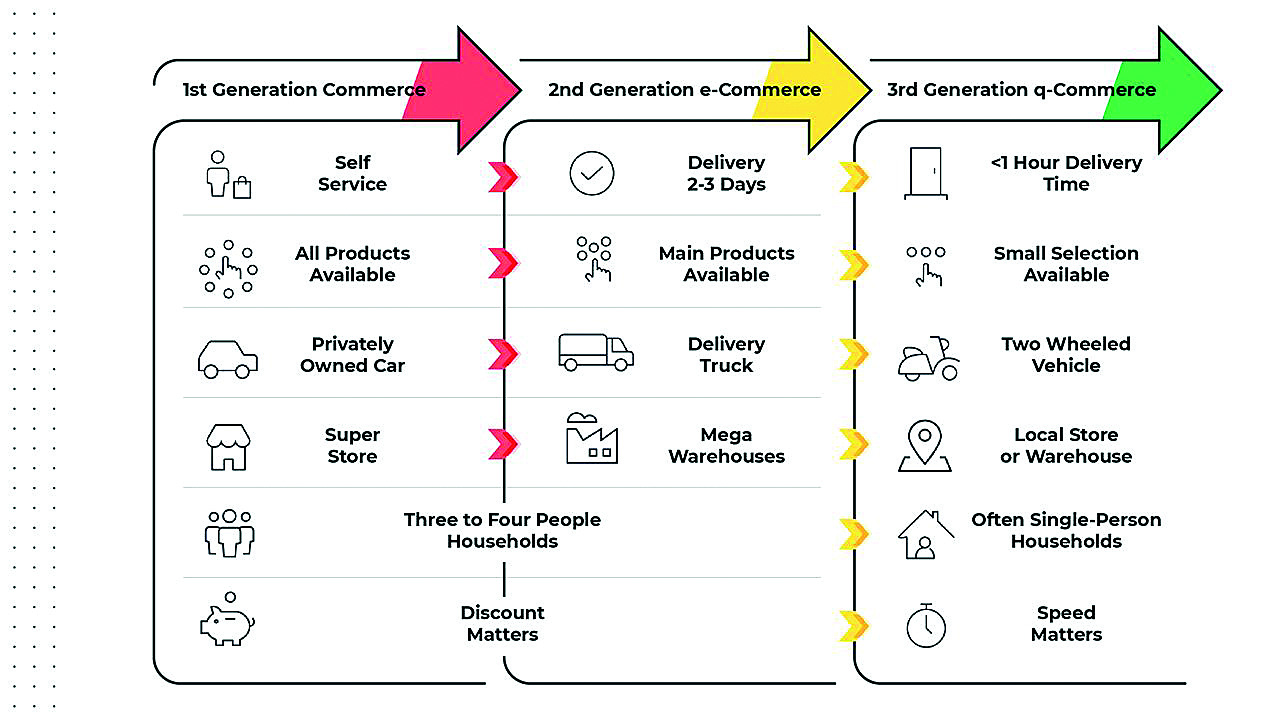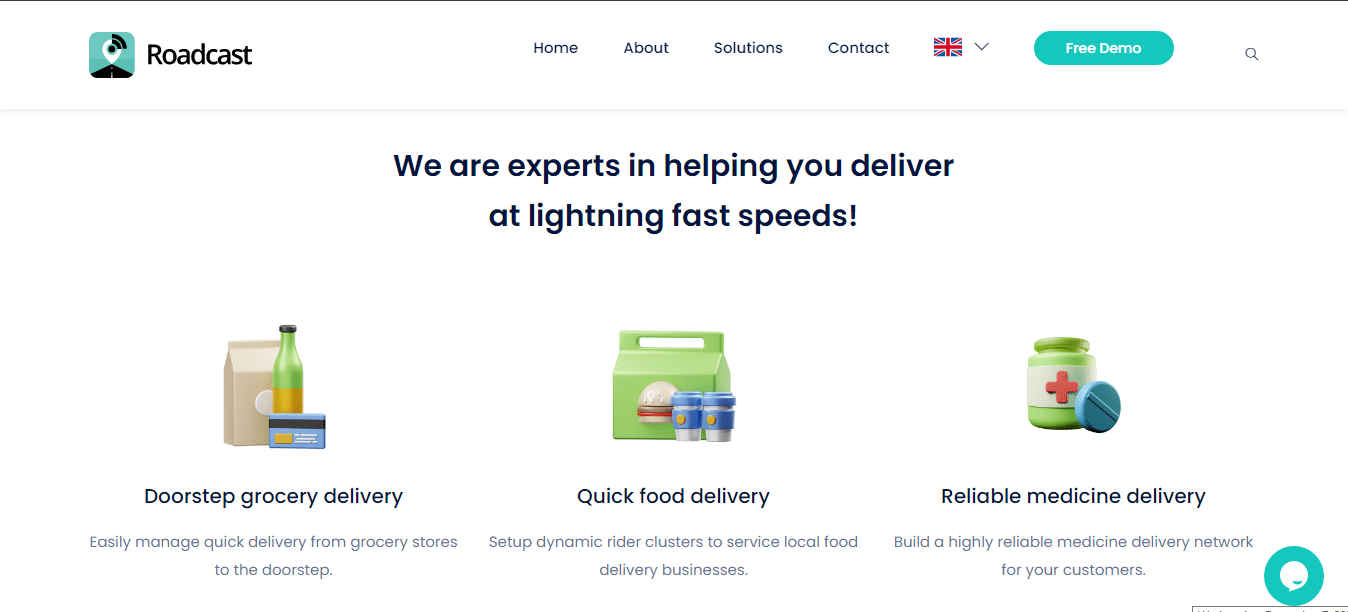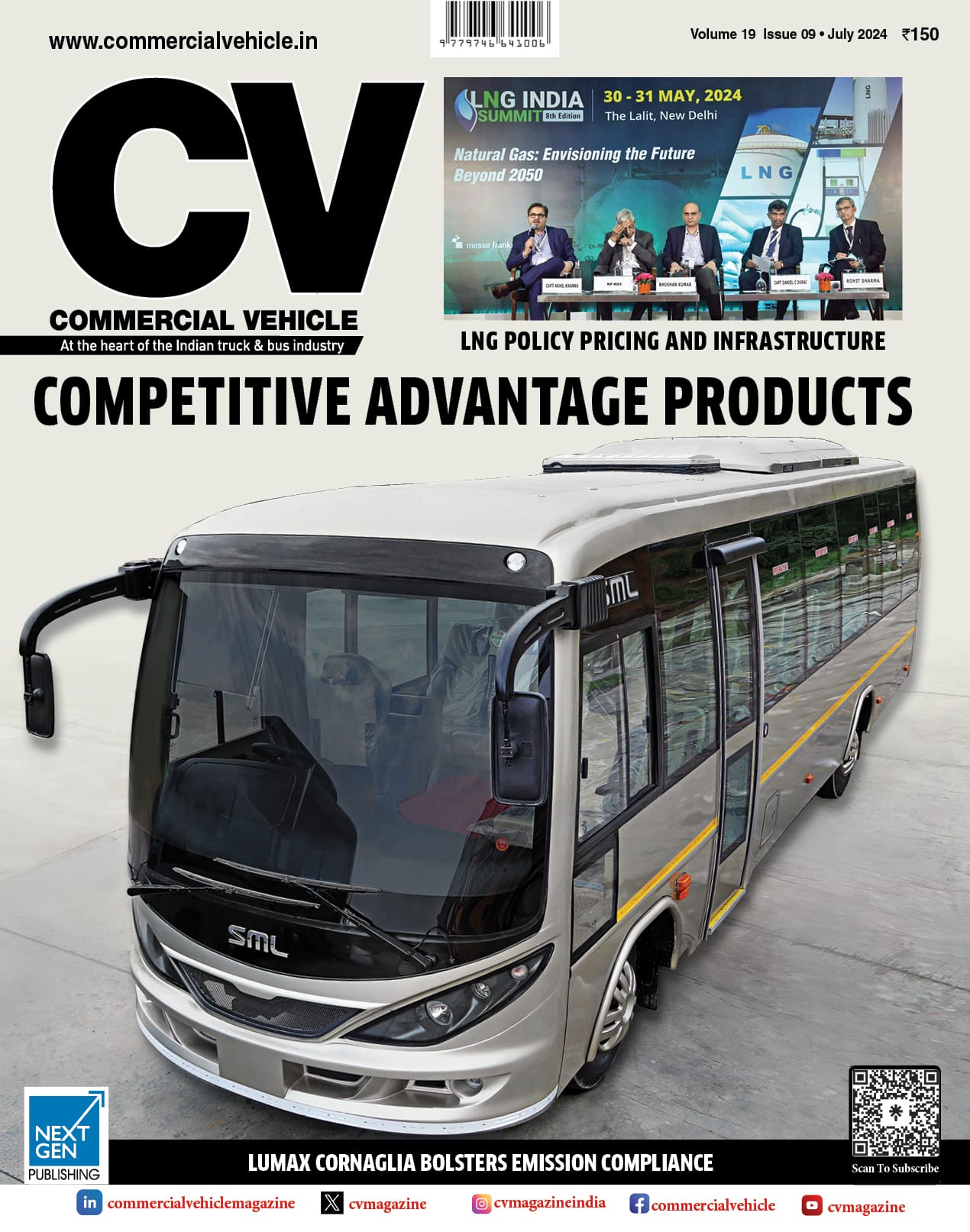Rahul Mehra, Co-Founder at Roadcast talks about trends in the hyper-local delivery space for 2023.

Logistics today is about adaption and innovation. Post-pandemic, the logistics sector has transformed. The urgency and need brought on by the pandemic have changed consumer behaviour and commerce forever. The change in variables for logistics led to the retail sector becoming more focused on hyperlocal. Due to increased isolation, the demand for hyperlocal deliveries skyrocketed and continues to grow at a massive pace. Post-pandemic, as well, as seam-less hyperlocal deliveries are the need of the hour with businesses looking to invest in the sector to make it robust and rapid. With increased rapid delivery demand for food, personal care and even healthcare products, both large and small corporations, incumbent business owners and local vendors are shifting towards Q-commerce and E-commerce platforms further catapulting the growth of hyperlocal. This will continue to grow and shape the market at a steady pace. Here are eight trends expected to be witnessed.
Vehicle connectivity via handshakes
Hyperlocal is all about convenience and this convenience heavily depends on optimised shipping. In hyperlocal, there are multiple modes of transportation involved. E-bikes have almost completely replaced fuel-powered two-wheelers. The EVs not only provide a cost-effective solution for logistics but also on fronts like vehicle connectivity. E-commerce is now using three-wheelers for the first mile and mid-mile. These EVs are helping companies ace the rapid inter-city movement of goods, making logistics more efficient and sustainable. These connected vehicles allow for a handshake model of delivery wherein the three-wheelers bring a majority of goods to a sorting centre or a micro warehouse and from there e-bikes complete the last-mile delivery. One bike picks a particular order from the starting point and delivers to a certain point from where the other e-bike picks it up and completes the last-mile delivery like in a relay. This is called the hand-shake delivery model. By removing bigger vehicles from the last-mile and hyperlocal equation, high cost of logistics can be removed from the picture. So using technology, logistics can bifurcate the delivery model and optimise it via connected vehicles.
Farm to Table
People are increasingly looking for fresh produce and one-of-a-kind experiences. Hyperlocal has grown to accommodate not just nonperishable goods but also perishable commodities like groceries, meat, dairy, etc. This is possible only with the technological advancement in the logistics sector including vehicles. Logistics now has provisions for temperature and humidity monitoring among other key metric. This is especially crucial for meat delivery and augmenting the farm-to-table concept. Hyperlocal ensures that fresh goods are delivered to the customer. This ‘fresh’ feat is only possible with advanced technology like temperature sensing and humidity moderation to name a few.
Driver Safety
With reduced time lines, it is also essential to keep the riders safe. For the same, tech advancements ensure that the vehicles are enhanced with tech that allows monitoring of the driver behaviour also. Installing Internet of Things (IoT) which collects data about speed, traffic rules, and even video cameras helps in ensuring that all rules are followed and that the riders are safe and sound.
Standardisation of products including perishable products
Product standardisation is paramount when it comes to the growth of hyperlocal. It is not only cost-effective but also provides customers with a carefree purchase experience. With product standardisation and logistics that support fresh goods delivery, there is a guarantee that the product upholds a preset standard for quality. This standard applies to perishable products as well like eggs, dairy and meat industry especially for ordering on Q-commerce platforms. Standardisation makes it easier for consumers to order these perishable products online and for logistics as well to follow a certain norm and include tech in vehicles that helps achieve the same like temperature monitoring etc. Meat and dairy, for instance, in the entire delivery process need to have a certain environment to stay fresh. These variables are different for different perishable goods and tech in vehicle connectivity helps in achieving the same. For hyperlocal to grow, standardisation especially for perishable items and products with a lower shelf life will provide a major incentive for growth.
Advancements in SaaS
Technological advancements like AI, blockchain and big data provide an impetus for retailers to hop onto the hyperlocal bandwagon. Deliveries will continue to be speedier while keeping the shopping experience warm and familiar with that of visiting neighbourhood stores. The way forward to ace hyperlocal is intelligent SaaS platforms. The coordination between, multi- point picks ups and places of delivery while acing end-to-end visibility is only possible with SaaS. The increase in Hyperlocal will be accelerated with more technological advancements in SaaS, making it more cost and time-efficient.
Brought on by the pandemic, the consumer now demands exceptional services which include rapid and seamless deliveries as well. This increase in demand for reduced time lines calls for technology innovation, especially in the logistics and automotive sectors. Elevated by the change in consumer and supplier demands who are looking to speed up the process, technological advancements will deal with increasing the frequency of deliveries while recusing costs, bringing about technological advancements in automation, augmented reality, data collection, visibility and AI application.

Coordinating between multiple suppliers, multi- pick-up points, and various delivery streams can often lead to inefficiencies if handled incorrectly. Advancements in supply chain management and AI-powered logistics are one of the key trends in the hyperlocal space. They are identifying and computing variables zeroing in on the most efficient shipping methods including streamlining first-mile, micro warehousing, sorting centres, and mid-mile delivery for example while minimising costs will be crucial for hyperlocal.
The commerce sector depends on connectivity and mobility. From large-scale retailers to local vendors. Everyone today has shifted online, especially with the availability of user-friendly AI interfaces for merchants and one-click online payment portals. These tools have helped even neighbourhood vendors connect directly with the customer. The consumers are looking to explore, especially the paddock-to-plate concept. This could be offered by small, medium or large companies because now enhanced route planning to plan daily deliveries, considering various variables like traffic, rider availability, time, tracking live status, and direct connectivity with the delivery executive taken care of by AI-powered logistics interfaces. This increased reach has allowed consumers to connect with these businesses and explore farm-to-table brands and help them grow at an exponential pace.
Hyperlocal has truly revolutionised the commerce sector. It brings an array of products to the consumer’s doorstep at a time convenient to them. Hyperlocal has been beneficial for both established businesses and neighbourhood vendors and in the coming future, these key trends will shape the hyperlocal sector.
…………………………………………………..
Rahul Mehra, Co-Founder at Roadcast talks about trends in the hyper-local delivery space for 2023. The assessment and views expressed by him are personal.
Also read, Porter Launches Tech-Enabled Logistics





























